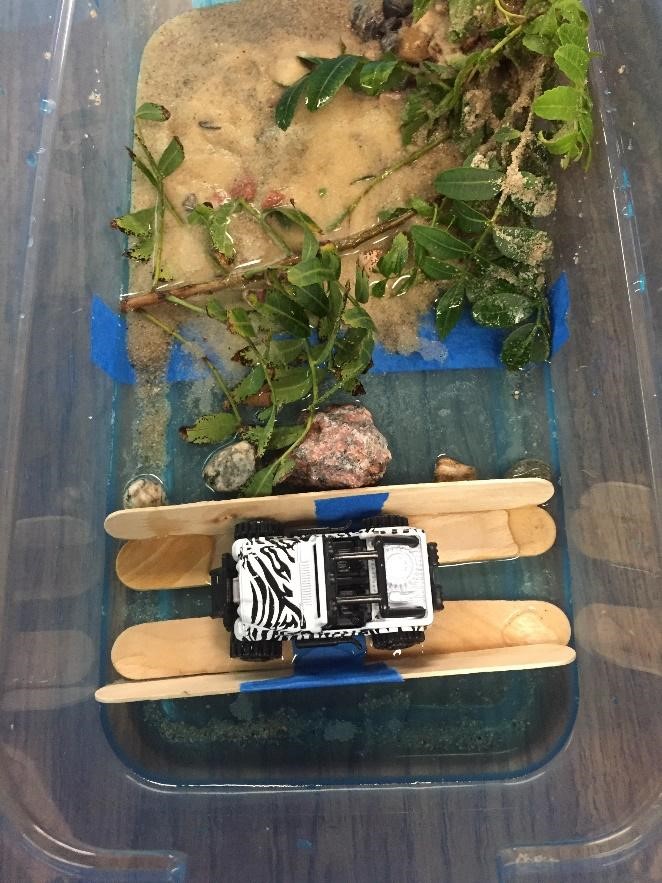How I Teach Science in Three 25 Minute Sessions
By Lizette Ashcraft, 2nd-grade teacher, Morrison Elementary
I have a passion for science. However, even with my dedication to my favorite subject, I find it difficult to find the time to teach science at the elementary level with a mountain of subjects piled on my desk.
A chance to teach science!
This year is different. I got the opportunity to teach the enrichment class during our designated English Language Development time. Every second-grade student rotates to another class to receive instruction that matches their needs. I have the largest class with 32 students to accommodate smaller class sizes for English language instruction.
My kingdom for a sharpened pencil!
My whole class would fall apart if I ran out of pencils. Also, I can’t have 32 kids going back and forth to the pencil box to get a new one. So, each child gets a plastic folder that our school receives as a donation, and the students keep pencils and paperwork in the folder as if it were a desk. They get to keep their folder in the box with their teacher’s name on it. The table captains are in charge of getting the box, handing out the folders and collecting them. At the end of the year, they will have a portfolio to take home and share with parents.
My love/hate relationship with science materials.
For science supplies, I use rectangular dollar store plastic bins and divide the supplies in the bins while the children watch a video based on the phenomena we are studying for the month. This saves time handing out the stockpile during a session in such a short period. It also makes for easy clean up as the children put everything reusable back in the rectangular bins and throw away anything that can’t be recycled or reused.
Dividing up the lesson.
Most science investigations can’t be completed in 25 minutes, so I break them up into three parts. For example, I have an erosion investigation in which the children create a mini garden and fence to try to protect their toy vehicle from a landslide. For the first session, the children look at different photographs of fences (I offer 3 choices) and discuss (without saying the answer) which ones might be best to hold back water/land in the event of a small mudslide. After the discussion, the children team together to build a mini fence using popsicle sticks and adhesive tape. The amount of tape is limited as well, since engineers do not have unlimited resources. During the second session, the students discuss and create different gardens to create a landscape on one side of their fence using dirt and small plant clippings from the school’s green space. In the third session the students place their toy car on the empty side of the rectangular plastic box to test their fence against a sudden rainstorm (The children will use small cylinders to pour water). We discuss their t observations as I proctor the room, but a more formal discourse will take place on a future date. Time is set aside for clean up, but this too may be limited as chaos ensues when 32 children try to clean up at once. Most of the time, I just ask for basic clean up and have a few volunteers to take care of a more detailed cleaning.

The children came up with the platform style protective fence.
Photo by Lizette Ashcraft
The follow-up
The following week will be a discussion on the structure and function of their fence and gardens. We use a graphic organizer like this one.
| Drawing | Structure | Function |
| (Students line drawing of their fence.) |
Sample student answers:
|
Sample student answers:
|
This discussion takes place over three sessions on three different days. On each day we complete a drawing, structure and function chart.
| Monday | Tuesday | Thursday |
| Discuss which fence worked best and any improvements that could be made. What worked? What didn’t? | What thought did you put into your garden? Did you just make it look pretty or did you think of placing plants in a certain order to help retain water? | What did you learn? The children would write a journal entry of their experience. |
Final thoughts.
Regardless of all of the mess and level of organization needed to facilitate science in my classroom, I do so because I believe it could be a lifeline for my students, many of whom come from low socioeconomic status households. There are so many opportunities in the field of science, that a solid background in science could give unrestricted means of admission or access to a steady income and stability. Although it is very challenging to teach science in any schedule, I do so because of the effect it has on my students. I do it for the student who is an emerging reader, but whose eyes light up when she creates her own discovery.





